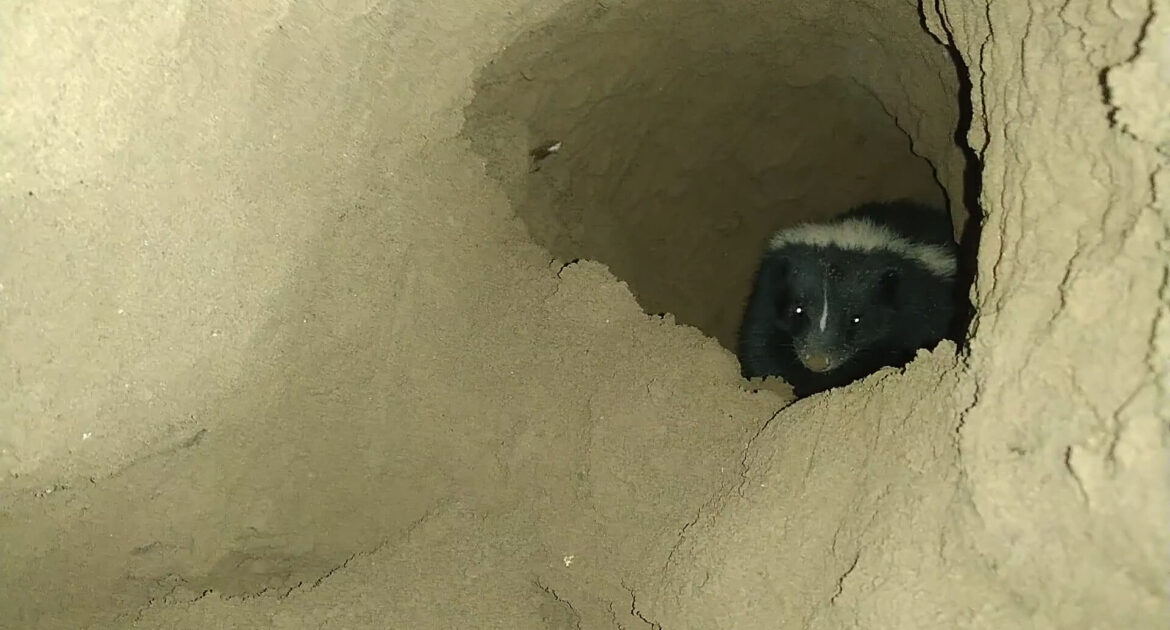When spring finally begins to unfold in our region, we all rejoice at the signs of life bursting all around. Trees, flowers and animals all start to stir from their winter slumber. As the weather warms and Earth thaws, skunks are among the many mammals that become more active. Though skunks don’t hibernate in winter, they do slow way down and sleep a lot more than they do the rest of the year to conserve energy since food sources are scarcer.
Once life begins to reemerge, skunks spend more time looking for sustenance to replenish lost calories. This means you may see them around your house more. They also start looking for new dens, particularly pregnant females. If you spot one snooping around your home, it’s a good idea to contact professionals in humane skunk removal Oshawa. While it may simply be looking for food, it may also be seeking out a new home. Knowing what skunks eat in the spring can help you make sure your house does not become a five-star skunk dining establishment!
An Omnivore’s Palate
Skunks are omnivores. That means that they can eat plants, animals and insects. They aren’t terribly picky eaters and will take advantage of any form of food that presents itself. Skunks are neither fast-moving nor good climbers, so they are somewhat limited in the sources available to them. They eat a wide variety of plant foods, such as nuts, fruits, leaves, roots, some fungi and grass.
Their palates are primed for insects and other animals as well. Skunks have no trouble feasting on bees and wasps. Skunks are bees’ primary predators, and kits learn early in life how to coax honeybees out of their nest! Larvae, earthworms and grubs make up a significant part of the skunk diet, but they’ll pretty much eat any invertebrate they can get their paws on. When other animals are available, they can be found feasting on them as well, including:
- Bird eggs
- Small mammals
- Salamanders and lizards
- Frogs
- Snakes
- The occasional fish
A Forager’s Foray
Skunks are primarily landbound since they aren’t great at either swimming or climbing. When it comes to dining, they get their sustenance from whatever is available and within easy reach. Though they eat animals of all sorts, they are primarily foragers. Their lack of speed makes them inefficient hunters, except for the small prey that regularly ends up on the menu. With a skunk’s flexible diet, it isn’t terribly difficult for it to obtain the nourishment it needs.
Their foraging skills and broad palate have allowed these mammals to do quite well in urban environments. Like raccoons, they have no trouble dining on your leftovers, Fido’s food or your garden veggies. They don’t have the dexterity in the digits that the masked bandit has, so they can’t manipulate latches or lids as well. They do, however, regularly access trash bins that aren’t tightly secured, as well as pet food left in bags and bins outdoors and fresh food from your summer garden.
A Skunk’s Springtime Challenge
After a winter of scarcity, spring offers a buffet of goodies, though more becomes available as the months move closer to summer. Since many plant sources are not yet plentiful, especially in the early weeks of the season, skunks rely more heavily on animal sources. Just like skunks themselves, other animals are waking up and becoming much more active as the weather warms.
Spring also provides an abundance of insect larvae and bird eggs. These are great sources of protein and fat that help skunks replenish what they lost over the winter. As plant sources become more available, their diet gradually shifts to include more of these foods and fewer animal foods. `
Skedaddle Humane Skunk Removal in Oshawa
At Skedaddle, we have the expertise needed to humanely remove skunks from your property, without getting sprayed! Contact us when you need help evicting unwanted wildlife tenants.




